Aging leads to a wide array of bodily changes that decrease quality of life, impair people’s physical abilities, and increase the risk of various health conditions.
One effective way to prevent or reverse many of these changes is for older adults to stay physically active. Putting together an effective exercise plan for your older clients can deliver numerous benefits: stronger muscles and bones, improved insulin sensitivity, cardiovascular improvements, better endurance, a lower risk of falls, and much more.
As a coach or personal trainer, you must understand that older clients often have physical limitations and require a different approach to stay safe and get the most out of their training.
Read on to learn about the best exercises for older adults, crucial safety considerations, potential challenges, and more.
Changes that Occur with Aging (and the Health Benefits of Physical Activity)
As mentioned above, aging leads to unfavorable bodily changes that affect the quality of life, overall health, and well-being.
Here are some of the common ones:
- Decreased muscle mass (sarcopenia) (1)
- Reduced bone mineral density (2)
- Decreased cardiovascular endurance (3)
- Decreased flexibility and balance (4)
- Reduced range of motion (5)
At first glance, some of these might not seem all that bad. But unfortunately, a cascade effect often results from just one adverse change.
For example, sarcopenia (age-related muscle loss) can lead to decreased insulin sensitivity, strength loss, impaired physical abilities, and a reduction in resting metabolic rate (RMR) (6, 7).
Similarly, bone mineral density loss can lead to osteoporosis, a debilitating disease in which bones become frail and prone to fractures. Unfortunately, the condition is often not diagnosed until a bone breaks (8).
Let’s now go over some of the most notable benefits of regular physical activity:
1. Reversing Sarcopenia
Any form of structured physical activity can slow down sarcopenia and help people maintain some degree of physical capacity (9).
Strength exercises have the most profound impact because they cause a stronger stimulus, promoting hypertrophy and muscle strength. A higher protein intake (at least 0.7 to 0.8 grams per pound of body weight) is also necessary for maintaining and building muscle (10).
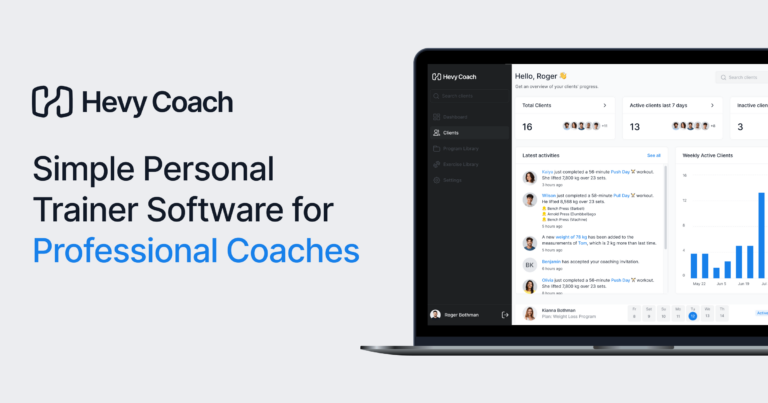
Try Hevy Coach
Intuitive personal trainer software, with a world class experience for your clients.
30 day free trial, no credit card required
2. Improved Physical Capacity
In addition to strengthening many of the major and minor muscles, physical activity improves people’s ability to exercise, play sports, carry out everyday tasks, and more.
As a result, older adults become more independent and are better equipped to handle any challenges life throws their way.
3. Stronger Bones
Subjecting the body to physical stress causes an adaptive response. Muscles, joints, connective tissues, and bones get stronger and better able to handle the same degree of tension in the future (11).
The most notable benefit is that bone mineral density increases, leading to a lower risk of osteoporosis.
4. Improved Mental Health
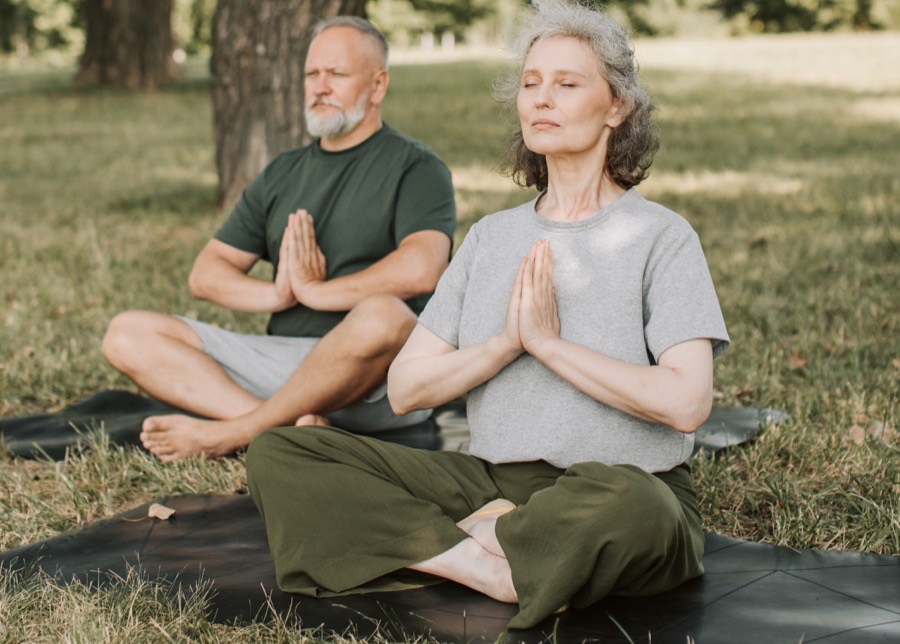
Mental health issues are common today, especially among older adults, who are at risk of anxiety, depression, and dementia.
These effects could be further magnified by isolation, sleep problems, excessive worrying about one’s health, and similar.
Regular exercise is one effective way to promote mental health in older adults, leading to more optimism, a lower risk of depression and anxiety, and more opportunities to socialize and form deep bonds with others (12).
Research also suggests regular physical activity can protect against age-related cognitive decline (13).
5. Lower Risk of Chronic Disease
As a coach, you’re probably well aware of the profound positive impact of regular exercise on physical health. These effects are even more beneficial for older adults who are at a higher risk of chronic pain, cardiovascular disease, diabetes, cancer, and even the common cold (14).
Regular exercise promotes good health and could lower the risk of many debilitating and life-threatening chronic conditions.
In addition, a sustainable exercise routine could encourage older adults to make other positive changes to support their health. Good examples include eating more whole foods, being more active, prioritizing sleep, and spending more time outside.
Exercises Modalities for Older Adults
Aerobic Exercise
Aerobic exercise is a simple and beginner-friendly way for an older adult to embark upon a fitness journey and see some initial results.
Low-impact cardio activities like walking (outside and on a treadmill), cycling, using an elliptical trainer, swimming, and engaging in water aerobics are all fantastic options.
These activities burn calories, promote cardiovascular health, and develop endurance. Over time, regular aerobic exercise can contribute to healthy blood pressure, a greater VO2 max, and healthy weight loss (15, 16).
Strength Training

Resistance and strength training are muscle-strengthening activities that can work great for people of all ages.
The beauty of resistance exercise is that you can modify it to fit your client’s abilities. Begin with easier activities and gradually increase the difficulty to keep your clients sufficiently challenged.
Bodyweight exercises, traditional strength training, and resistance band workouts are three ways to strengthen the entire body and deliver the health benefits discussed above.
One notable benefit of strength training over other modalities is that it can more effectively strengthen various tissues in the body, such as muscles, connective tissues, and bones.
Balance and Flexibility Exercises
It is a good idea to include flexibility and balance exercises in the training plans of new clients to improve their overall mobility and stability, especially if they are older and haven’t been active for years.
In combination with a sedentary lifestyle, aging is a recipe for stagnation that can influence your client’s ability to perform exercises safely and correctly (4, 5). For example, hip and ankle tightness can often result in an inability to squat and lunge, leading to less effective lower-body workouts.
Yoga poses are a fantastic option for beginners because the discipline combines balance, strength, and flexibility into one. In addition to lengthening the muscles, yoga develops core strength and promotes whole-body stability, which leads to safer and more effective training.
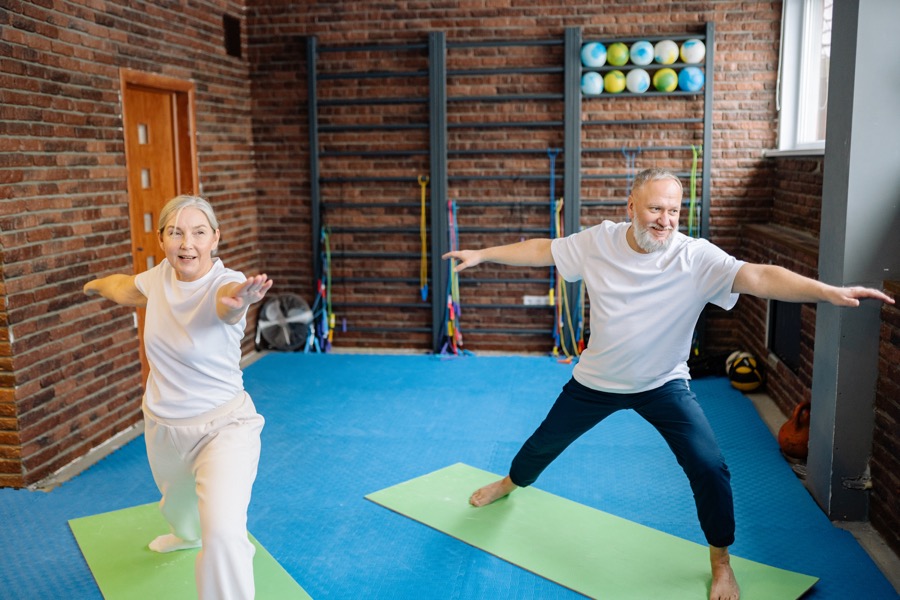
A few examples of beginner yoga poses include:
- Easy pose or crossed legs (Sukhasana)
- Mountain pose (Tadasana)
- Warrior 1 (Virabhadrasana I)
- Seated forward bend (Paschimottanasana)
- Tree pose (Vrksasana)
- Bridge pose (Setu Bandha Sarvangasana)
- Chair pose (Utkatasana)
- Cat/cow stretch (Chakravakasana)

Try Hevy Coach
Intuitive personal trainer software, with a world class experience for your clients.
30 day free trial, no credit card required
Safety Considerations For Older Clients
1. Warm Up
Any good workout starts with a good warm-up session. There is no formula for the perfect warm-up, but older clients generally need more time to prepare.
You can start with low-intensity cardio, such as cycling on a stationary bike for a few minutes. Then, proceed to some static and dynamic stretching:
- Arm and leg swings
- Arm circles
- Hip circles
- Standing quad stretch
- Hamstring stretch
- Wall ankle stretch
- Shoulder and tricep stretch
Depending on your client’s limitations, you can spend more time on the legs or upper body.
Once your client warms up and feels more agile, you can introduce some simple resistance band activities. In fact, you should urge your client to do the same warm-up and sequence of exercises at home every day to improve their mobility and build strength.
Good movements with resistance bands include:
- Bicep curls and tricep extensions
- Shoulder presses and lateral raises
- Lat pulldowns and horizontal rows
- Chest flyes and presses
- Banded squats
- Romanian deadlift
2. Individual Needs and Limitations
Every client has unique needs and limitations. As a trainer, your priority should be to understand these before putting together an exercise regimen.
For example, one client might have heart disease, another could be overweight or obese, and a third person might suffer from poor mobility and lack of balance. In many cases, a person’s limitations result from multiple things.
One option is to perform a movement assessment to understand what issues your client might be having. If the issue goes beyond your expertise, you might have to communicate with the person’s doctor or physical therapist.
3. Progression
Progression is the cornerstone of any good exercise program because the human body adapts to almost any kind of physical stress. As a result, what might be an effective workout routine now could be ineffective a month or two down the road.
Helping seniors exercise could be about encouraging them to keep coming back and doing rudimentary movements at first, but the challenge needs to increase over time. Doing so allows your clients to improve and enjoy their training plan.
Initially, progression could focus on the following:
- Improving the flexibility of individual muscles
- Developing overall mobility to perform exercises through a longer range of motion
- Working on balance and stability (e.g., strengthening the core muscles) to promote safer training
As the client develops a fitness base, progression could shift more toward athletic outcomes:
- Lifting more weight
- Doing more reps
- Covering longer distances
- Performing activities more quickly/explosively
Of course, progression must occur gradually and forcing any type of overload should happen if you’re confident your client can handle it.
4. Proper Form
A large part of your job as a trainer or coach is to teach your clients how to move correctly and regularly assess their technique.
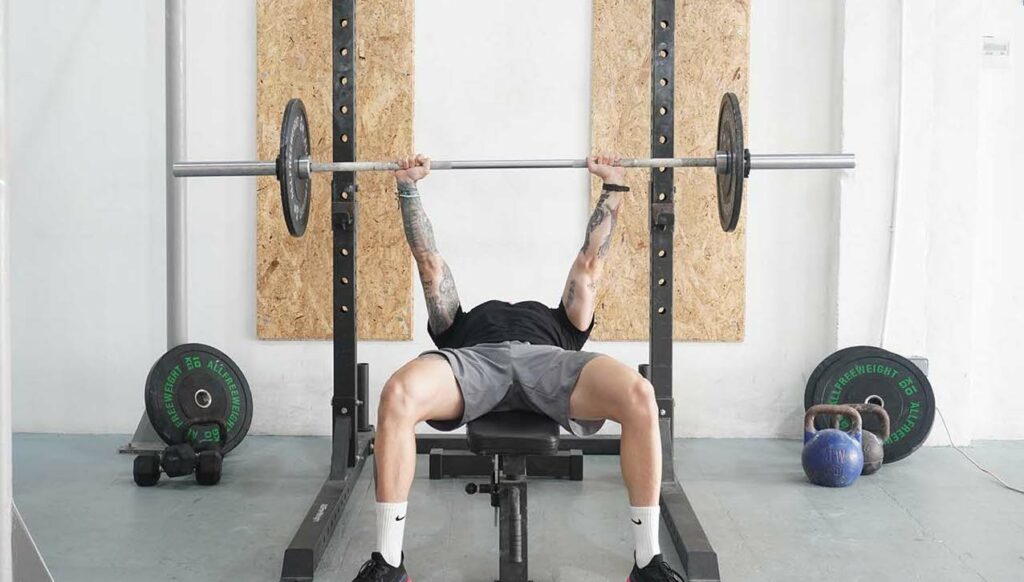
The best exercises for your clients are those they can perform correctly while maintaining balance. For example, the following activities are often recommended for strength and muscle growth:
- Romanian deadlift
- Front squat
- Bench press
But what if your client cannot do them correctly? We are now circling back to limitations and how part of your assessment should be to determine what your client can and cannot do.
In such a case, you would recognize that a movement isn’t beneficial and must modify or replace it. For instance:
- Romanian deadlift ⇒ machine hamstring curl
- Front squat ⇒ back or bodyweight squat
- Bench press ⇒ push-up (or knee push-up if the classic version is also too difficult)
5. Rest and Recovery
Proper recovery ties all training principles together. Without recovery, even the best workout plan won’t be helpful and might put people at risk of injuries.
In addition to understanding your client’s limitations and guiding them through an intelligent progression model, you must understand how well they can recover. Lifestyle factors like diet, sleep, and stress play a role here, so be thorough and ask questions.
For instance, the US Health and Human Services Department has developed the following physical activity guidelines for older adults (17):
- A combination of balance, aerobic, and strength activities
- The correct intensity level based on physical ability
- Understanding how a health condition might affect the exercise approach
- At least 150 minutes of moderate-intensity exercise per week
Unfortunately, not every elderly person can handle 150 minutes of moderate-intensity exercise from the start. Some clients might have to start with a third of that and gradually progress over several months.
6. Monitoring Medical Conditions
Monitoring a client’s medical condition falls outside most coaches’ expertise.
Suppose a client has an underlying condition or has undergone one or more medical interventions in the last few years. In that case, encourage them to visit their supervising physician for frequent check-ups.

Modifying Exercises for Elderly Clients
Any potential client can go on Google and find a cookie-cutter exercise program. In most cases, these approaches fail because they don’t account for individual differences, goals, preferences, and more.
As a coach, you must continually modify your client’s plan based on feedback: recoverability, enjoyment, aches that may develop, etc.
1. Intensity and Duration
The first way to modify any movement is by adjusting the intensity and duration. For example, you can have your client lift lighter weights if they struggle with technique or perform an activity for shorter periods.
Often, beginners will train with good form at the start of each workout, but fatigue would cause their training quality to decrease.
Monitor your client to determine when and how to adjust their workouts.

Try Hevy Coach
Intuitive personal trainer software, with a world class experience for your clients.
30 day free trial, no credit card required
2. Range of Motion
The second major change you can make is to the range of motion. For instance, if a client cannot squat through a full range of motion, begin with half or quarter squats to establish a base.
Gradually increase the depth as your client gets more comfortable with the exercise.
3. Tempo
Tempo is simply the speed with which a trainee performs a movement. Therefore, tweaking it can be an effective way to increase the difficulty and teach proper form without making any other changes to training volume, loading, etc.
For instance, instead of having a client do movements with a regular tempo (e.g., 2-1-2), deliberately slow down and emphasize the pause at the top of each repetition.
To use squats as an example again, have your client descend for three to four seconds and hold a three-second pause at the bottom. Doing so is an excellent way to provide a potent stimulus through fewer reps.
Plus, deliberately slowing down the tempo forces your client to train with proper form and not rely on the stretch reflex.
4. Variations
The fourth way to modify exercises for your elderly client is to try different variations, especially on bodyweight exercises.
For example, planks are fantastic for developing the abdominal muscles and whole-body stability, but many of your elderly clients might not be able to assume the position at first. In that case, start with knee planks (on the forearms) and gradually work up to high planks:
Knee plank (forearm) ⇒ Knee plank (straight arms) ⇒ Elbow plank ⇒ High plank
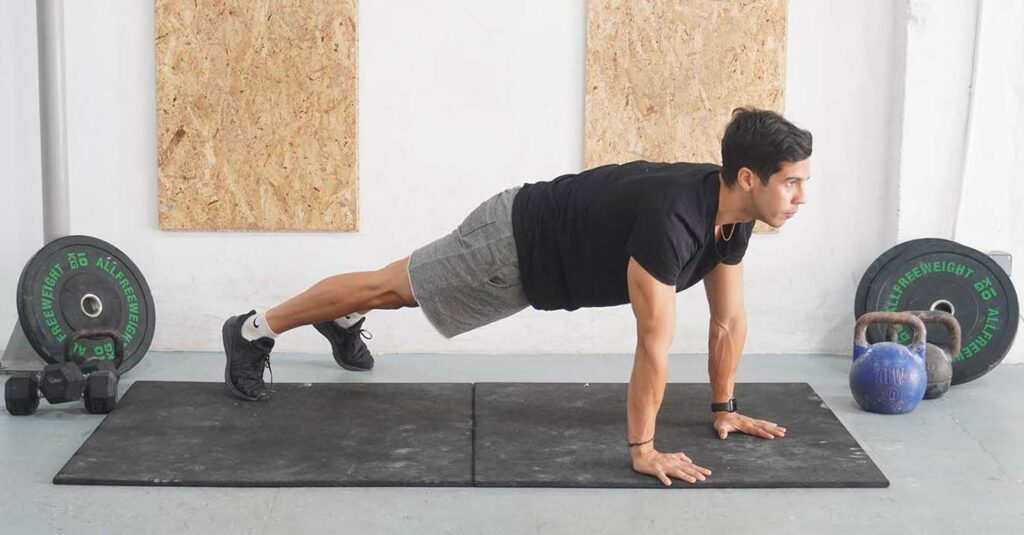
Hevy Coach is a great platform you can use to coach clients. You can send training plans to clients, track their progress, and pick from various movements and variations in the rich exercise library.
Two Common Challenges and Solutions for Coaching Older Clients
1. Compliance
Being a good coach is about more than just writing programs and instructing people on how to do exercises. Of course, both are important, but you must also know how to communicate with clients and inspire them to return.
Many coaches believe that motivating their clients is the best way to improve compliance, which makes sense. A motivated individual is willing to be more consistent and work harder.
Unfortunately, motivation is a fleeting feeling. It comes and goes in waves, and relying on it rarely works out in the long run.
A better approach is to meet your client in the middle. You may know what your client needs to do for optimal progress, but you must also consider what they are willing to commit to.
For example, your client might only be able to exercise three times per week for 30 minutes. In such a case, tell them that’s a great start and see what you can do in that time.
In many cases, being more understanding will boost client satisfaction, help you form a stronger bond, and, ironically, motivate that person to become more invested over time.
2. Physical Limitations
It would be great if physical limitations didn’t exist, and we could coach clients exactly how we want, but that isn’t the case, especially for older clients.
Just as you should be understanding of your client’s investment in fitness dedication, you must acknowledge their limitations.
Part of being a great coach is understanding that each client has a unique starting point and that your job is to help them build from where they are now. One client might be able to do more than another, but that doesn’t mean they are better or deserve more of your time and attention.
Support your clients and watch as they become more invested, consistent, and willing to work hard.

Try Hevy Coach
Intuitive personal trainer software, with a world class experience for your clients.
30 day free trial, no credit card required
Final Words
Coaching older adults is a unique process that presents challenges and forces you to grow as a trainer. You must consider a variety of limitations and find creative ways to work around each issue.
More importantly, you must learn how to communicate with clients in a way that inspires them to keep coming back without feeling overwhelmed. You might be a great coach for motivated clients, but true mastery lies in understanding how to help people in all situations.
In addition to providing a good training plan, you must prioritize safety, know how to modify exercises on the run, and overcome compliance issues.
We hope our article has given you some good ideas for coaching older clients. The process is challenging but rewarding because you watch your client’s quality of life improve. Your guidance can help people lead richer and more fulfilling lives.
Heavy Coach is a platform that allows you to train your clients, provide motivation and feedback, and track progress down to the smallest details.




